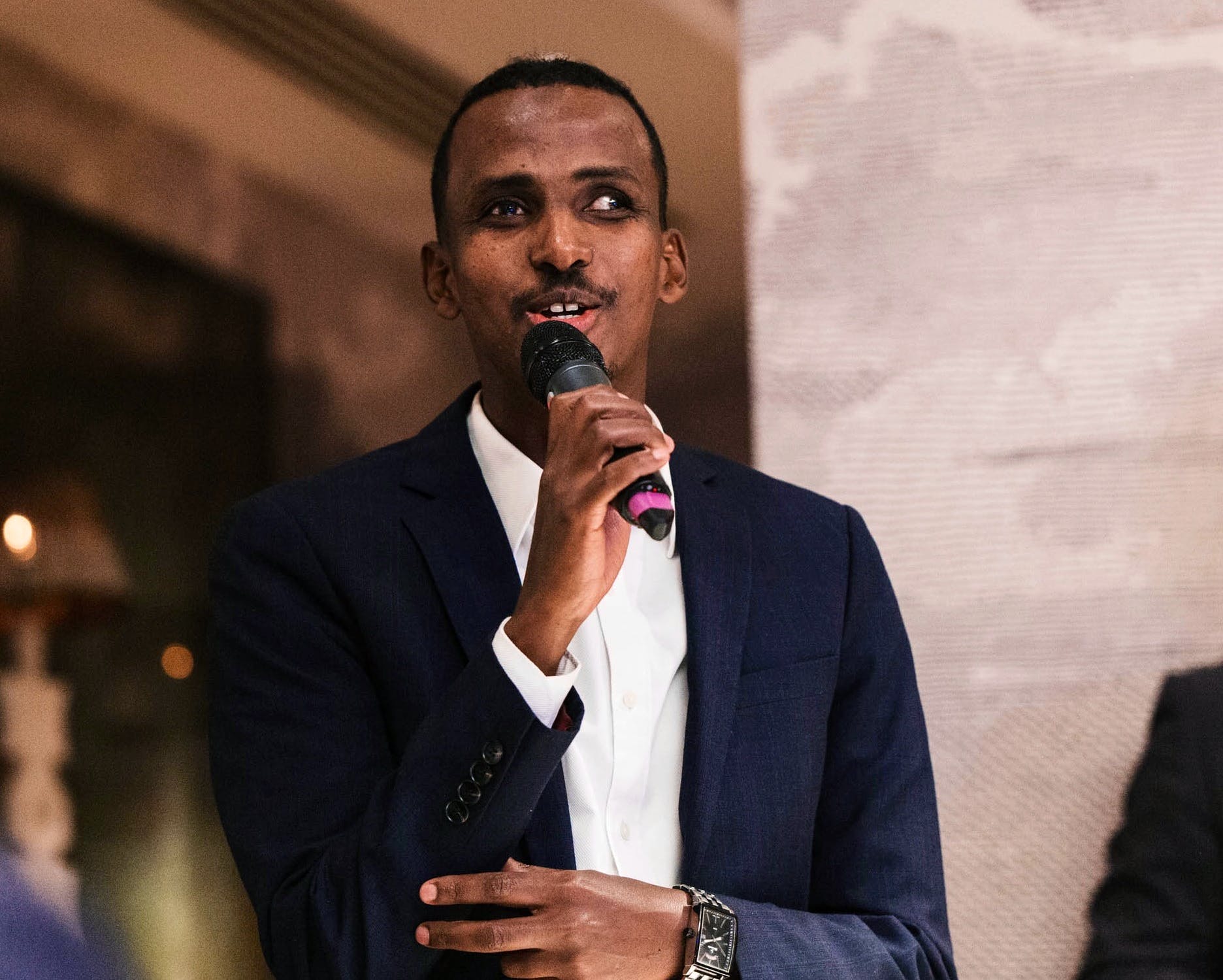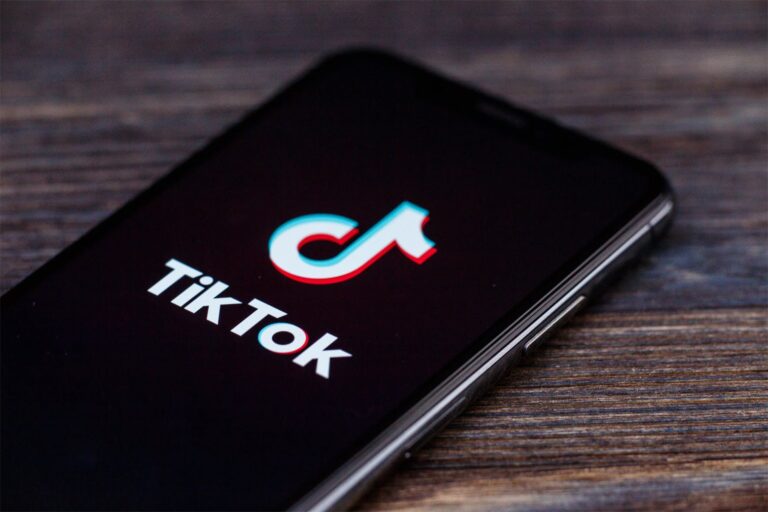“One is that it’s expensive,” Siyad replied. “People think it’s going to cost an arm and a leg, and that we don’t have the budget.
“What is striking for me about this report – and I think it highlights where accessibility is at the moment – is that 78% of participants said the reason why they are accessible is because they want to support people with disabilities. And while that’s good on the surface, it’s not enough to really push the accessibility agenda to a level that’s parallel with other topics of diversity, like race and gender.”
“The notion of ‘normal’, the notion of a ‘typical user’, needs to be as wide as possible to really take into account what the accessibility functions of [web3 or the metaverse] need to look like.”
Siyad also noted that accessibility laws have a real impact on the creation of accessibility programs: G3ict found that public sector organisations had the most mature accessibility programs with 52% having programs that were at least seven years old, and 17% having been working towards inclusion for more than 20 years. In the UK, public sector organisations are required by the Equality Act 2010 and also the Public Sector Bodies (Websites and Mobile Applications) Accessibility Regulations 2018 to make “reasonable adjustments” for users with disabilities and to make their web and mobile presences accessible.
Although many organisations have a way to go in prioritising digital accessibility, there are others that have made clear efforts to create an inclusive digital experience. Reflecting on the brands and businesses that he has encountered with standout accessible experiences, Siyad said,
Where are we on digital accessibility in 2022?
“Just like you maintain any product on a regular basis, accessibility needs to be part of the maintenance – that’s something really worth highlighting. It’s a continuous process.”
These are huge swathes of the populace to be excluding – but Siyad’s point is that it’s also important for businesses not to think of digital accessibility as a set of measures only geared towards one group of users (those with disabilities), but as a way of widening access for everyone.
While digital accessibility may have become a higher priority for organisations in recent years, does Siyad think businesses are doing enough to build accessibility into their digital transformation projects from the ground up?
“I think this misconception needs to be clarified because it’s really not expensive until you scratch your head at the last minute trying to make things accessible – because then you’re retrofitting accessibility. Imagine you build a nice house, and realise at the last minute, ‘Oh, this house has issues – how do I get into it?’ It’s going to cost a lot more money than if you accounted for that in the first place. That’s number one.”
The agency also makes a point of publishing resources like guides and webinars that educate about the value and benefits of accessibility in order to raise awareness of its importance. “Again, I go to the ripple effect,” said Siyad. “I feel happy being in a role like this with a digital transformation agency because the impact is really huge – we’re not just making their website accessible, we’re creating a better end user experience for everybody.”
For its part, Cyber-Duck has taken steps to ensure that accessibility is embedded in the end-to-end process for its digital transformation projects – rather than being an add-on or, as Siyad put it, a “nice to have”. All staff have undertaken broad accessibility training with the Royal National Institute of Blind People (RNIB), and the organisation is also a member of the International Association of Accessibility Professionals (IAAP), which is a division of G3ict that supports organisations in integrating accessibility into their services, products and infrastructure. “The reason we joined [the IAAP] is to contribute into that space – to enhance the standard of how accessibility is embedded,” said Siyad.
This is despite the fact that, even if you do only consider users with disabilities as those who are being shut out by a lack of digital accessibility, in the UK alone, this amounts to 22% of the population according to statistics from the Department for Work and Pensions Family Resources Survey. In the US, the percentage is even higher, at 26% according to the Centers for Disease Control and Prevention – more than a quarter of the population.
User Experience and Interaction Design
Siyad joined the agency in October 2021, and is also the founder of Inclusive Horizons, a Dubai-based accessibility, inclusion and life coaching consultancy, as well as being a UNCRPD (United Nations’ Convention on the Rights of Persons with Disabilities) certified trainer. In his role as Diversity and Accessibility Lead, Siyad helps to oversee diversity and inclusivity within the Cyber-Duck business as well as in its digital transformation work for clients. He also carries out user testing on client projects.
Outside of work, he is also a former Team GB Paralympian and holds the amazing title of the first visually impaired Certified Scuba Diver in the UAE.
When it comes to accessibility and inclusivity, Siyad’s remit at Cyber-Duck is a wide-ranging one, covering the organisation’s internal approach to diversity and inclusion as well as the accessibility of its products and client projects.
What are some common misconceptions about digital accessibility?
Ideally, Siyad thinks that accessibility should fall under the remit of a Diversity and Inclusion department – because accessibility and diversity and inclusion each have such an impact on the other that it’s impossible to truly separate them out, and measures to advance one should also advance the other. “We need to make sure that accessibility does not remain the ‘poor cousin’ of diversity,” he said.
“It really depends on whether your glass is half full or half empty – and whereabouts in the world you are,” Siyad said. “Overall, I would say it’s definitely improved a lot; the G3ict [Global Initiative for Inclusive ICTs] State of Digital Accessibility Report for 2021 interviewed more than 1,000 organisations around the world in almost any industry that you can think of, and they said that they’ve seen a lot of progress.
Siyad added that the issue wasn’t necessarily that accessibility needed to be centralised within a single department. “There’s no harm, and in fact it’s very helpful, for the responsibility to be spread across all different functions, because everybody needs to be involved in accessibility at a certain stage of the project.” However, he emphasised that there needs to be a group or individual dedicated to overseeing progress on accessibility and advancing its agenda. “For a lot of organisations, there isn’t an identified person or a department that monitors the progress of accessibility and is able to push its agenda in different meetings.”
Accessibility specialist Elisabeth Ward on disability in digital and the impact of the pandemic

However, there is a problem with the underlying principle of web3, which is envisaged as being largely decentralised, in contrast to the centralisation of Web 2.0. With this decentralisation comes a lack of accountability: who is responsible for ensuring that the overall experience is accessible?
Regular user testing throughout the process of building new digital systems, tools, or platforms can help to avert this situation, particularly if the experience is being tested by users with a diverse variety of access needs. “Most of the time, to be honest, these websites and applications are developed by non-disabled people,” said Siyad. “Or are developed by people who are not impacted by that particular experience. It needs to be tested throughout, so you don’t build something based on an assumption.”
Accessibility in digital transformation
The other major misconception that tends to crop up in relation to accessibility is, as mentioned previously, that accessible experiences are only needed by people with disabilities – when in reality they are needed by everyone. “Accessibility is still correlated with disability – which is partially correct, but our notion of disability needs to be broadened. It’s not just someone who is registered permanently disabled; it’s anyone who is experiencing a limitation of some sort in a particular moment,” Siyad said.
“There’s also a sports charitable social enterprise called Better UK, which I just discovered recently – it’s incredibly accessible, from the inclusive memberships that they offer to how easy the app and website are to use.”
One of the issues that Siyad said he rarely sees discussed is the “ripple effect” of making things accessible – essentially, the positive knock-on effect that accessible services and websites have on people’s lives. “If you make your websites, products, services, more accessible – how many people can really unleash their potential and contribute more to society and the economy overall when things are accessible to them?” he asked. “People will be able to gain employment, they’ll be able to excel in education, they can spend more into the economy – and so on, and so forth.
“The idea is that people create their own content, and own that – but because of that shift in the paradigm, how can we ensure it is accessible?” asked Siyad. “Facebook can say, ‘It’s nothing to do with us; it’s not owned by us, it’s owned by the users.’”
“The ripple effect is something that I think really needs to be looked at to compel the business case for accessibility.”
An organisational home for accessibility
“There’s no harm in blue-sky thinking,” he concluded. “But as someone with first-hand experience of these issues, I think we really have a lot more things to repair at the moment than worrying about the metaverse.”
Siyad pointed out that the importance of accessibility goes beyond the experience of people who are formally disabled and should be about creating an experience that is inclusive to all. “It needs to come from an understanding that it’s something that affects everybody at different points – whether it’s a temporary situation or permanent,” he said.
“I think it’s early days, but what is important is that as we move into this space in any shape or form – whether it’s web 3.0, the metaverse, or whatever you want to conceptualise – what’s important is that we don’t make the same mistake that we’ve been making for the last 30-40 years, which is designing for the quote unquote ‘normal’,” he said.
Accessible digital experiences: which brands are leading the way?
In the private sector, Siyad named Just Eat as having a very accessible and straightforward digital experience. Another brand that stands out in prioritising digital accessibility is Tesco: “It’s gone through a huge revamp in the last couple of years and their website and app are very, very accessible.”
Indeed, a case study writeup from March 2019 about Tesco’s accessibility-focused grocery app included several glowing reviews from visually impaired shoppers who found it transformed their experience of shopping for groceries. One wrote, “It has allowed me to browse and do my own shopping for the first time since going blind.” Another wrote, “So much easier to navigate and use than before … As a completely blind user it is refreshing to see just how much time and effort has been put into the access ability [sic] and I would like to offer my thanks for this.” Another user who was “recovering from major surgery” wrote in to praise the app – underscoring how accessible experiences can benefit people in a wide variety of circumstances.
“The public sector is leading in that space: the NHS really has one of the most accessible websites I can think of at the moment, from a user point of view – I’ve tested it myself – which is great to see.
One sticking point that organisations often encounter when it comes to accessibility, Siyad said, is that accessibility doesn’t have a natural “home” within an organisation’s internal structure. This was another key finding from the G3ict State of Digital Accessibility Report – as Siyad recalled, “other compliance issues are led by a specific department, whereas accessibility had been floating around CX, UX, HR, IT, et cetera.” This also results in accessibility lacking a dedicated organisational budget.
I asked Siyad how he perceives the state of digital accessibility in 2022. Broadly speaking, how accessible is the web at the moment, and has this improved in recent years?
Digital accessibility efforts within organisations can often fall victim to myths and misunderstandings caused by a lack of knowledge about what measures are truly beneficial, why they need to be taken, and how to put them into practice. I asked Siyad if there are any common misconceptions he has encountered about digital accessibility.
But are these new digital frontiers being developed with accessibility at the fore? After all, a web3 or metaverse that isn’t designed to be inclusive from the word ‘go’ will be useless to a significant segment of the world’s population, and do nothing to improve on their experiences with Web 2.0. I put this question to Siyad, who was ambivalent.
I recently spoke with Siyad to learn more about his work in accessibility and inclusion with Cyber-Duck, his thoughts on the state of digital accessibility in 2022, and whether he thinks businesses do enough to put accessibility at the heart of their digital transformation projects.
A more encouraging finding on this front was that 62% of organisations reported that they were addressing digital accessibility to provide “the best UX for all users” – making it the second most frequently-cited reason after the inclusion of users with disabilities, and showing that a majority of organisations do recognise the wider importance of creating an inclusive experience.
Some of the clients and digital transformation projects that Siyad has been involved with include Fast Stream, an assessment programme by the Civil Service that Cyber-Duck helped to transform into a remote experience during the pandemic; Sport England, with whom Cyber-Duck has worked on numerous projects including its Unifying The Movement strategy and the This Girl Can movement; and Sanctuary, a not-for-profit housing and care provider whose digital presence Cyber-Duck revamped and made accessible.
The accessibility of web3 and the metaverse
Yahye Siyad is the Diversity and Accessibility Lead at Cyber-Duck, a digital transformation agency specialising in UX and digital optimisation.
For example, Cyber-Duck’s accessibility work with the civil service Fast Stream assessment programme – a scheme to attract graduates and career-changers as well as those in the civil service who want a fast track into leadership – was designed to create an accessible and inclusive experience for all users, regardless of background, and involved usability testing by applicants with a range of different disabilities as well as neurodiverse applicants. This ultimately led to an increase in the success rates for all under-represented candidates.
“My role with Cyber-Duck is as the Diversity and Accessibility Lead, so I look at different things to do with diversity and inclusivity in general,” says Siyad. “Whether that’s making recruitment more inclusive; looking at the policies that we have; or looking at the products we design with our clients, and testing how accessible they are, promoting best practices, and creating thoughtful leadership programmes on accessibility.”
A great deal of commentary over the past year has focused on the emergence of the next iteration of the World Wide Web, web3, along with the metaverse, which is widely hailed as being the “next internet”. The two are not one in the same, but both concepts revolve around a major shift to the way that we interact online, with web3 promising a more decentralised web, while the metaverse promises a new level of integration between the physical and digital worlds.
In the United States, legal suits (as well as the Americans with Disabilities Act, or ADA) have also resulted in more organisations taking action on accessibility, while in Europe, the European Accessibility Act (EAA) came into effect in 2019 to complement the EU’s Web Accessibility Directive. In other words, both the desire to create an inclusive experience and the desire to avoid legal reprisal are effective in helping to widen digital access. “That really gives me hope … Accessibility requires a different approach and different reasoning for it to be taken seriously,” said Siyad. “It needs both the ‘carrot’ and the ‘stick’ approach, so to speak.”
“It could be that a video with captions helps someone who is hard of hearing, but also somebody who’s on a train and doesn’t have a headset with them. It’s bringing that to light more that helps [promote awareness of accessibility’s importance].”
“The pandemic definitely accelerated digital transformation in general, for a lot of organisations – and we’ve seen that across everything from retail to healthcare,” said Siyad. “But again, the issue of correlating accessibility with disability specifically makes it not necessarily a top priority.” Digital accessibility is still a “nice to have” for businesses, he said, rather than being seen as indispensable. “For a lot of organisations, it’s still a CSR initiative – and that needs to change.”
One thing that many brands – even those who are otherwise very committed to accessibility – overlook, however, is that creating an accessible experience isn’t a one-off job: maintaining it is also extremely important. “[Organisations] reach a certain point where they think that the accessibility is no longer required to be maintained, and as a result, any update to the application will often have one or two features that are not accessible,” said Siyad.
While many might not be thrilled by major technology giants like Meta or Microsoft putting their stamp on the next web, this is something that makes Siyad more hopeful that accessibility will be integral to web3 and the metaverse, because the tech giants are much more likely to consider accessibility a competitive advantage and not an optional extra. The likes of Meta, Microsoft and Alphabet are also more likely to view accessibility as important to their image, and want to show that they are leading the way with accessible technology – as evidenced by, for example, Microsoft’s April 2021 blog post announcing that it was “doubling down on accessibility”, or Meta’s insight into how it built accessibility into a redesigned Facebook, and its annual Accessibility Summit to coincide with Global Accessibility Awareness Day.




![[Integration] How to Set Call Tracking Goals to Increase CRO](https://research-institute.org/wp-content/uploads/2022/09/integration-how-to-set-call-tracking-goals-to-increase-cro.png)
![[July 2018] Convert Support Stories: All About Shopify](https://research-institute.org/wp-content/uploads/2022/04/july-2018-convert-support-stories-all-about-shopify-768x331.jpg)
